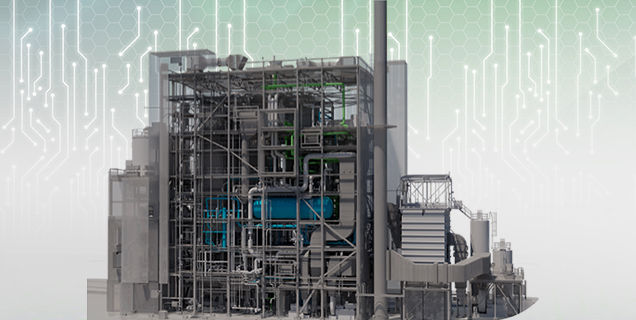Saving sootblowing costs with regular boiler heat transfer monitoring
Valmet DNA Boiler Sootblowing Manager
Valmet DNA Boiler Sootblowing Manager application gives plant personnel “eyes inside the boiler.” The solution calculates, stores and displays boiler heat transfer characteristics that indicate fouling and deposit accumulation on heat transfer surfaces. It also provides advice on the economically optimal sootblowing sequence to minimize the total cost of surface fouling and sootblowing operations.
Avoidance of shutdowns with regular monitoring of boiler heat transfer
Economically optimized and targeted sootblowing and washing
Shortened boiler maintenance times
Reduced risk of blockages and boiler corrosion
Offering a view inside the boiler
The Valmet DNA Boiler Sootblowing Manager application provides both short- and long-term control of the cleanliness of boiler heat transfer surfaces. Regular monitoring of heat transfer coefficients and comparisons with data from previous years helps detect gradual changes in the boiler heat transfer.
Starting levels of heat transfer coefficients at the beginning of operating seasons also indicate the success of surface washing during maintenance. This data can be used to improve washing methods and shorten maintenance times.
In addition, the application can define the fouling tendency of different fuels, facilitating optimization of fuel usage.

Comprehensive heat transfer characteristics
The application provides calculations of the following heat transfer characteristics for each heat transfer surface that can be measured by using the various continuous temperature and flow measurements available:
- Actual heat transfer rate (steam/water side) [MW]
- Actual heat transfer coefficient [kW/K]
- Load-compensated heat transfer coefficient [kW/K]
- Reference heat transfer coefficient after sootblowing [kW/K]
- Reference heat transfer coefficient before sootblowing [kW/K]
- Extra fuel consumption due to fouling [MW]
Optimization can be executed by calculating the following variables:
- Recommended sootblowing sequence [h]
- Actual sootblowing sequence [h]
- Cumulative fuel energy loss due to fouling [MWh]
- Cost-saving potential [MWh/h]
Trend displays in clear graphical format
The Valmet DNA Boiler Sootblowing Manager features a high-level user interface for easy analysis of available data.
The solution is seamlessly linked to the overall automation applications, guaranteeing efficient collaboration between plant management and plant control.
Related solution

Would you like to find out more about our performance solutions?
Please let us know more about your needs – and our experts will contact you shortly.
Contact us